Dawlish railway: Decade on from storm devastation
- Published

A storm in February 2014 left Dawlish railway dangling
Ten years have passed since a powerful storm battered the South West of England, leading to the evacuation of homes and the destruction of a railway line.
The tracks at Dawlish were left dangling by the force of the storm that began on the evening of 4 February 2014, cutting off the coastal town's only railway line to the rest of the region for eight weeks.
Its sea wall had survived three recent storms but the latest proved too much for the defences to withstand as huge waves crashed over the top.
About 50 people were evacuated from their homes that night. Among them was Peter Large and his family.
They lived nearby in a three-storey house and were evacuated after 23:00 GMT.
Mr Large compared the storm to a "giant taking a sledgehammer to the front of the houses".
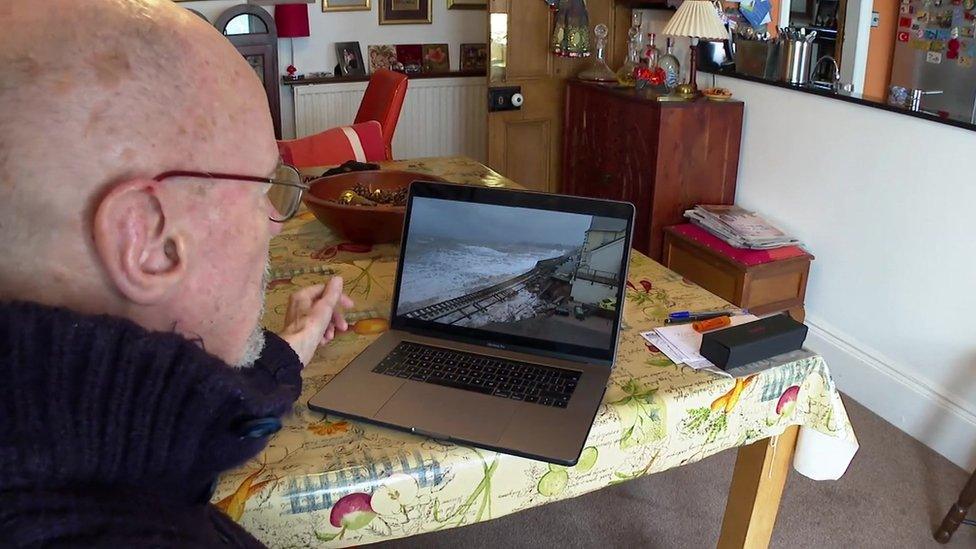
John Large and his family were evacuated from their home during the storm
He said: "You could see flashing lights. We had a knock at the door to say we had 10 minutes to evacuate.
"The sea wall was gone; we were worried there was a good chance the houses were going to go with it."

'It was raining rocks'
By John Ayres, BBC Spotlight
The collapse of the sea wall at Dawlish initially started in the evening.
I was in Looe, Cornwall, as the town had suffered really bad flooding, so I was staying in a hotel expecting to broadcast live from there in the morning.
Instead, I received a call in the middle of the night saying: "Get to Dawlish now, the railway has fallen into the sea!"
When we arrived in Dawlish, we couldn't go to the actual location where the wall had collapsed because it was too dark, unsafe and inaccessible.
Residents had been evacuated from their homes.
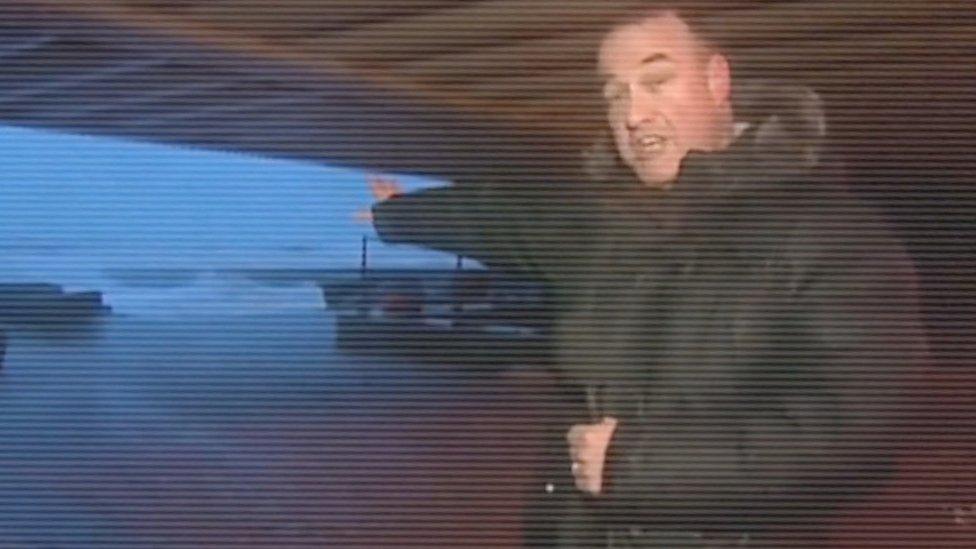
John Ayres covered the collapse of the Dawlish railway for BBC Spotlight
We pitched up in town along the front near the station but ballast from the railway was being tossed by the waves up into the air.
It was raining rocks in Marine Parade so we had to relocate to a safe position.
Fortunately, as it began to get light the storm did ease back a bit although it was still pretty hairy. We positioned ourselves in the underpass between the road and the beach.
Although our first live broadcast was fine, I was ordered to relocate before the next one because there were fears viewers would complain, saying the scene was too dangerous.
Sea water was pouring through the underpass and out onto the road behind us. As the day went on the number of media outlets outside Dawlish station grew and grew, forming quite a media village.
After a night of being pounded by both the wind, rain and sea it was a relief to finally have a full breakfast - although that was only the beginning of the day.

Steve Briers, a cameraman who shot the devastation on the morning of 5 February, called 999 to alert emergency services.
"Every wave that came in was taking another section of the road out," he said.
"I thought it was a matter of time before the houses just went into the sea as well.
"I was very aware that I was now on an island. I remember it being a very busy morning."
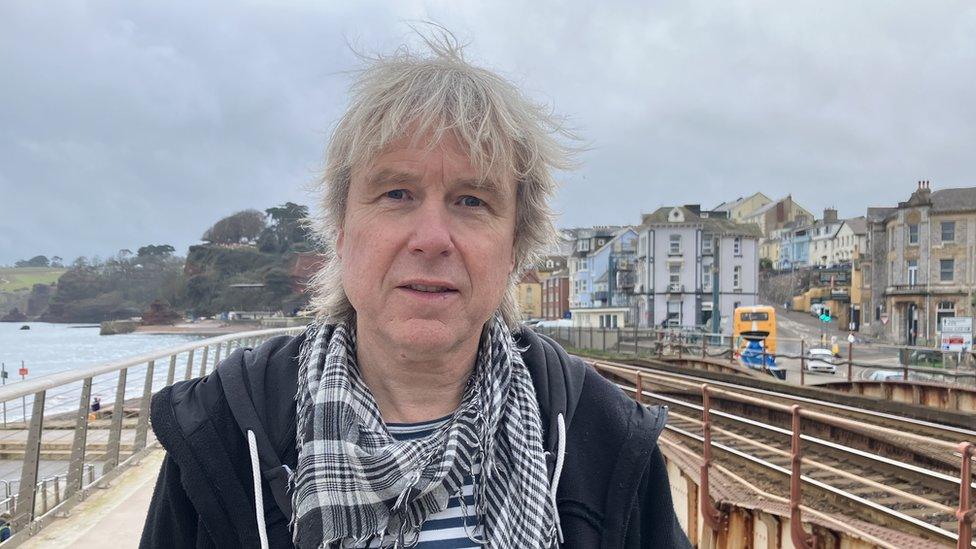
Cameraman Steve Briers filmed the hanging railway line at Dawlish
Those evacuated were directed to a nearby guest house, Sea Lawn Lodge, where people arrived with blankets around their shoulders.
Val Belcher, from the guest house, said: "People had five minutes to get out their houses. I made them tea and coffee and they had to go through to our dining room.
"The police were there and took all the information they needed."

Val Belcher said she gave those evacuated a safe place during the storm
Ten years on, Network Rail said a £165m package of resilience measures had been built, funded by the Department for Transport.
It said the measures were "proving to be effective".
Network Rail said the programme had delivered a stronger, taller sea wall for Dawlish and a new footbridge with lifts since 2019.
Rail Minister Huw Merriman said: "Thanks to more than £165m of government funding to restore and protect this vital stretch of railway, its future is now secured.
"This will provide residents with peace of mind - the line is better protected, no matter the weather."

Andy Bowes-Roden said he did not think it was "unfair for the South West to ask for its fair share"
Andy Bowes-Roden, deputy editor of Modern Railways, said the South West received among the lowest transport spends per head in the country.
He said: "In transport terms I think the government has let the South West down catastrophically.
"We've had billions spent in London, we're having billions spent in the Midlands, billions promised for the North.
"There was an integrated rail plan for £96bn for the Midlands and the North.
"Now for a tiny fraction of that money, we could have that additional route between Exeter and Plymouth.
"We could strengthen our coastal railway, we could upgrade existing routes, we could expand bus services."

Follow BBC Devon on X (formerly Twitter), external, Facebook, external and Instagram, external. Send your story ideas to spotlight@bbc.co.uk, external.
Related topics
- Published25 May 2023
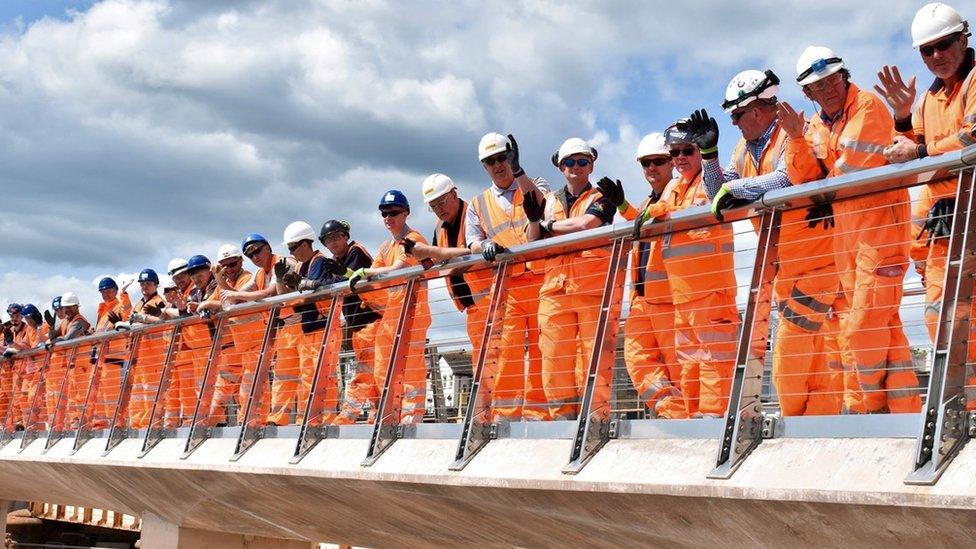
- Published1 April 2022
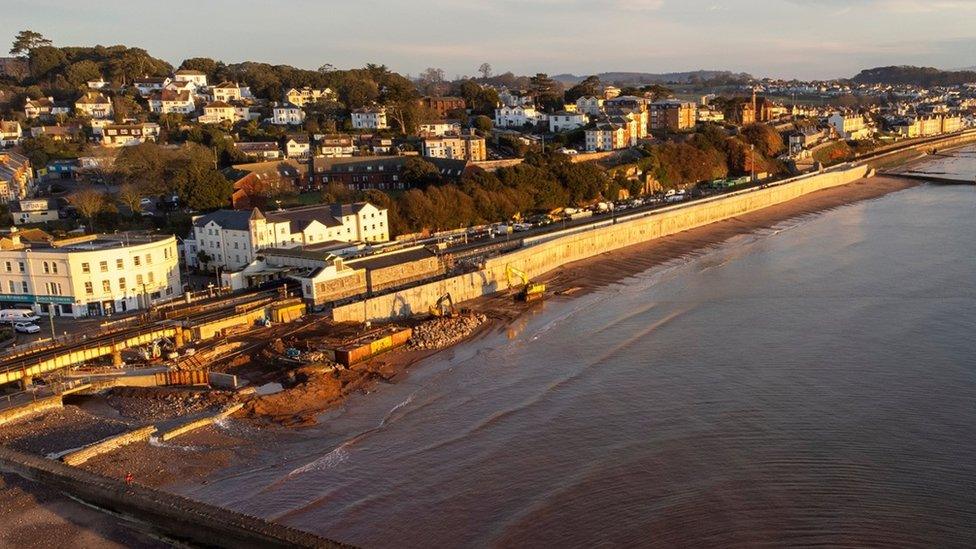
- Published25 September 2020
